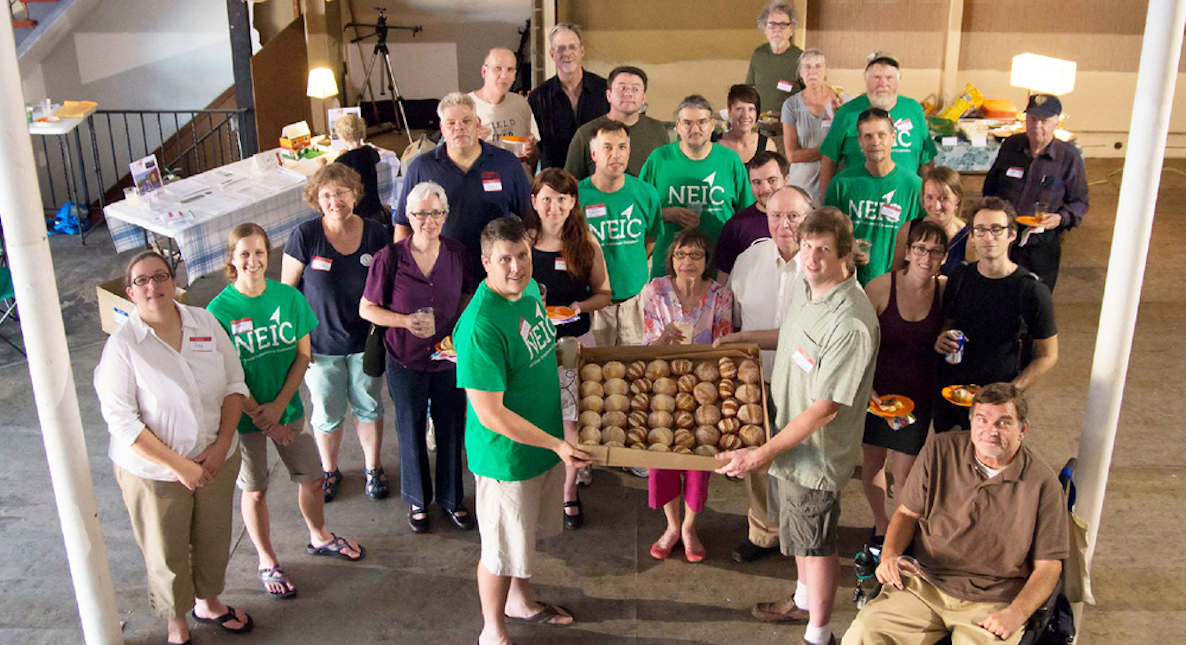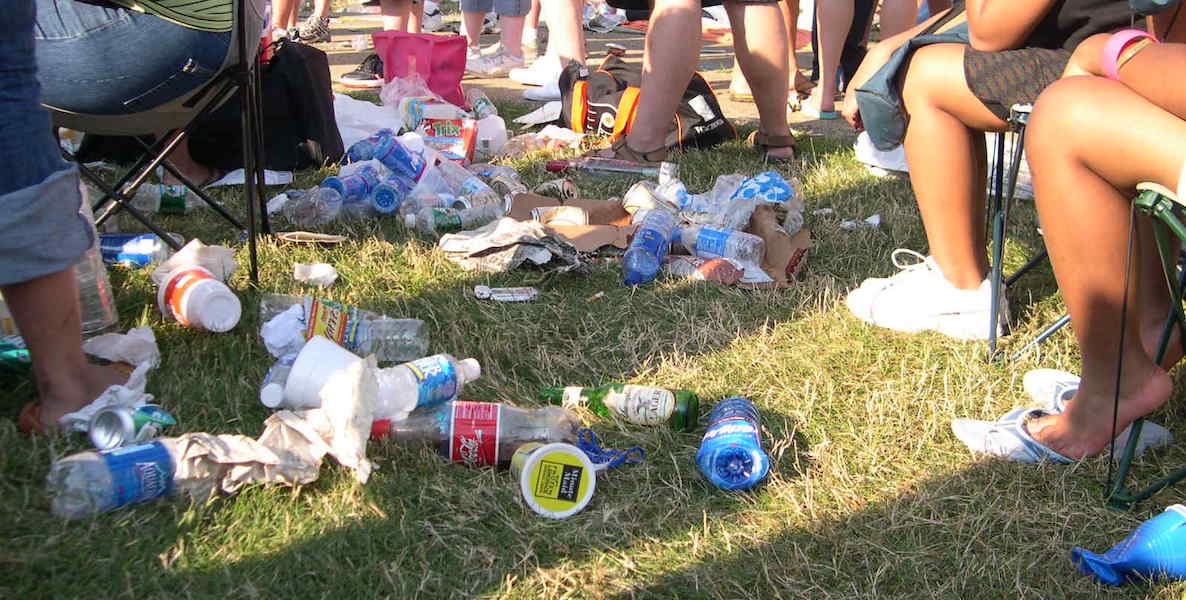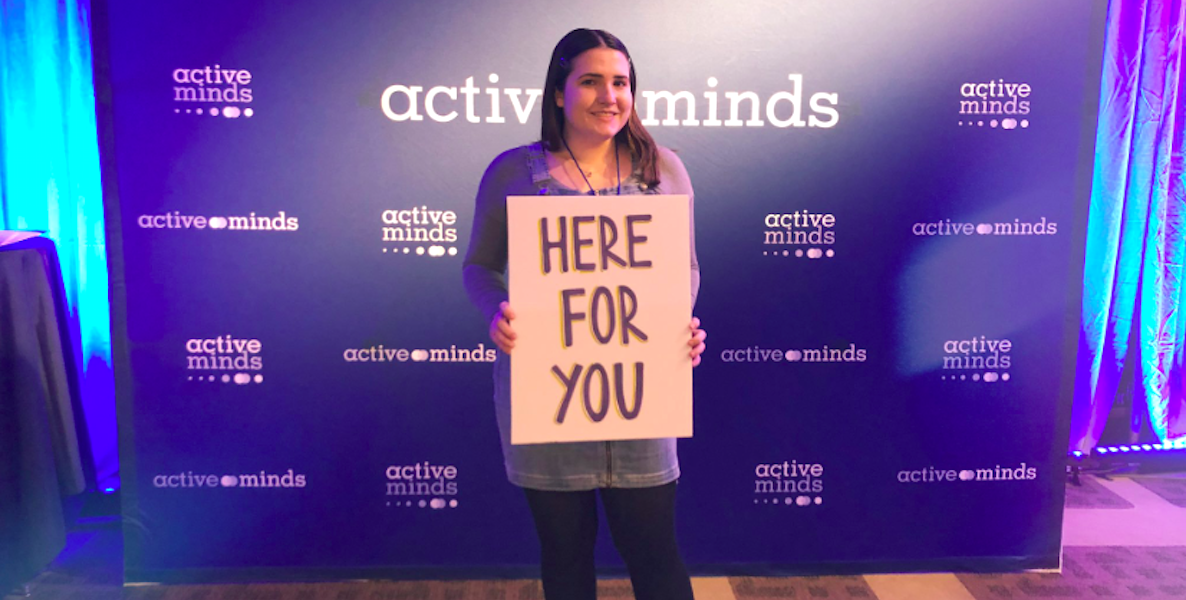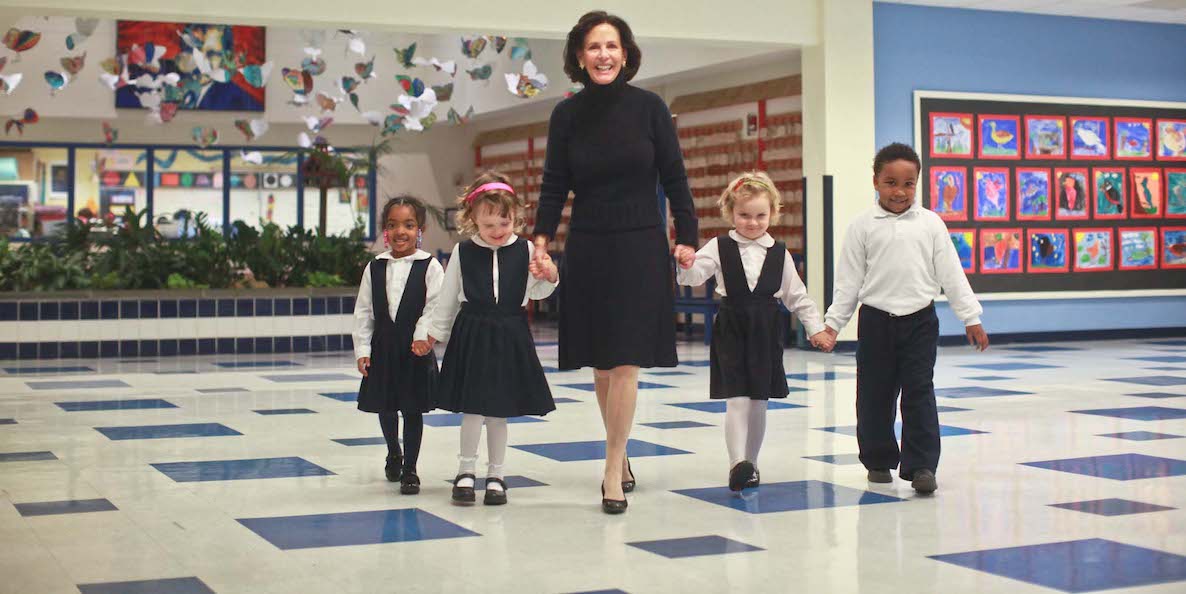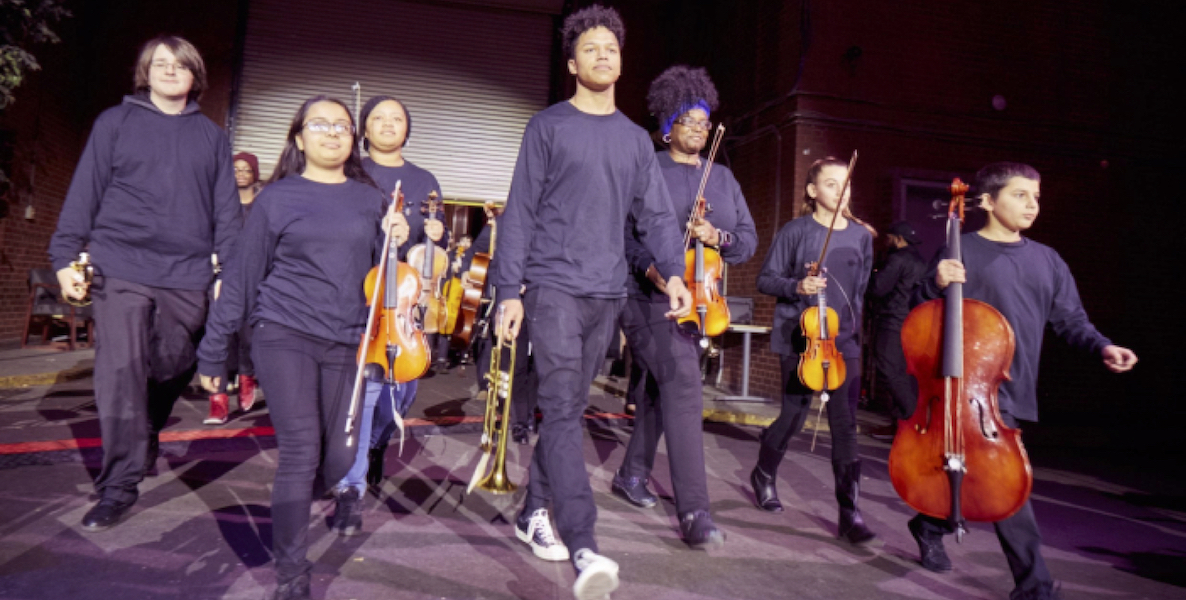It sounded too good—or too crazy—to be true.
Back in 2016, when Temple Contemporary Director Robert Blackson came up with his vision for Symphony for a Broken Orchestra, a chorus of SDP teachers were — understandably — skeptical.
In reaction to the school district cutting its annual music budget from $1.3 million to $50,000, Blackson — a bona fide visionary, under whose helm the whole idea of community museums has been flipped on its head from being mere showcases to being meaningful, interactive, community-driven vehicles—had dreamed up an entirely original solution: Collect all of the broken, unusable instruments wasting away in schools; tap Pulitzer-winning composer David Lang to create a piece using the instruments in their unrepaired state; invite the public to “adopt” the instruments with donations; use the funds raised to hire expert repair-people to restore the instruments to their full functionality; and return them to schools for students’ use.
“Before Symphony for a Broken Orchestra came along, we had closets full of broken instruments,” Baker says. “We were scrounging for ways to fix them, and then Robert came along.”
“No one had ever done anything like that before, and Robert was challenged,” recalls Ernie Baker, who for the last 17 years has taught music to fourth through eighth graders in five Southwest Philly schools. “Some music teachers raised their hands and said What if while we’re waiting for a year or more for you to get this whole project going, the School District gets money and we could’ve had our instruments repaired? Why should we even trust you?” Their language may have been more diplomatic, Baker acknowledges, but the sentiment was the same.
Baker, however, immediately saw Blackson’s proposition as “manna from heaven.”
![]()
“Before Symphony for a Broken Orchestra came along, we had closets full of broken instruments. For some of us, almost half of our inventory was damaged in some way because the school district had been going for years without a budget for instrument repair,” he says. Some teachers used their own money to cover the costs; others, like Baker, got support from groups like local churches. “We were scrounging for ways to fix them, and then Robert came along.”
![]()
Undeterred by skeptics, Blackson ultimately pulled off his multi-part mission with success: In December 2017, Symphony for a Broken Orchestra performed at 23rd Street Armory, raising just over $179,000 through individual donations from as little as $5 up to $5,000; they also receive support from foundations like The Pew Center for Arts & Heritage and The Barra Foundation.
The project spoke to Blackson’s mission at Temple Contemporary, to curate art that takes its cues from, and engages with, the city around Temple, rather than hanging objects on a wall and inviting the community in. Other Temple Contemporary projects have included 2014’s reForm, which asked students from the soon-to-be-shuttered Fairhill School to tell its story through objects they brought to the museum; and Funeral for a Home, in which artists Billy and Steven Dufala and Jacob Hellman staged a memorial service for a building about to be demolished in Mantua, as a way to talk about neighborhood change.
In December 2017, Symphony for a Broken Orchestra performed at 23rd Street Armory, raising just over $179,000 through individual donations from as little as $5 up to $5,000.
Symphony for a Broken Orchestra accomplished what it set out to do last school year, when Temple Contemporary returned just over 1,000 instruments to city schools. In May, they released a free recording of the performance. And this upcoming school year, they’re preparing to deliver instrument repair kits to all schools, to address the main reason most of the district instruments were deemed irreparable in the first place: teachers simply didn’t have the tools or materials to make minor repairs. Blackson says that when a student comes in with, say, a stuck valve on a trumpet, the teacher will now be able to immediately unstick that valve and give it right back to the kid. “And that will keep the majority of instruments that we discovered through the process of this project in the students’ hands all the time,” he says.
![]()
Now, Temple Contemporary is embarking on a new chapter altogether, going beyond Philly to help bring music back to schools nationwide, with the launch of Symphony for a Broken Orchestra Foundation. “In doing our research, we recognized that Philly wasn’t alone, and that you could look at Baltimore or you could look at Chicago or you could look at Milwaukee or you could look at Boston and you would see this same pattern of cities with big populations trying to accommodate students from a variety of backgrounds and that in many ways unfortunately their budgets were falling short of their aspirations in terms of teaching students music,” Blackson says.
![]()
The initiative will be helmed by Devin Greenwood and Arun Pandian, music producers who’d overseen the recording of the 2017 performance, organized rehearsals, and led recordings of the broken instruments that live on the group’s website.
The goal is not to export and replicate the Philly model, but to adapt it to suit the culture and needs of other cities. “Chicago is a different city than Philadelphia—and the students are different, the challenges are different, the instruments are probably different. And so because of that, we want to be as flexible and receptive and really empathetic listening to Chicago’s situation,” Blackson explains.
Wherever the Foundation does its work, there’s no denying the potential music access could have on the lives of children who need it most.
“The students I teach don’t have a lot of other cultural support,” Baker says. “When I sign an instrument out to a child, it’s a very exciting thing. Almost all the children I teach are culturally deprived. And it’s a little inroad, a little step, to show them something cultural, artistic, and social. So I see what I do as very, very important.”
Thankfully, so does Symphony for a Broken Orchestra.
Photo via Broken Orchestra


